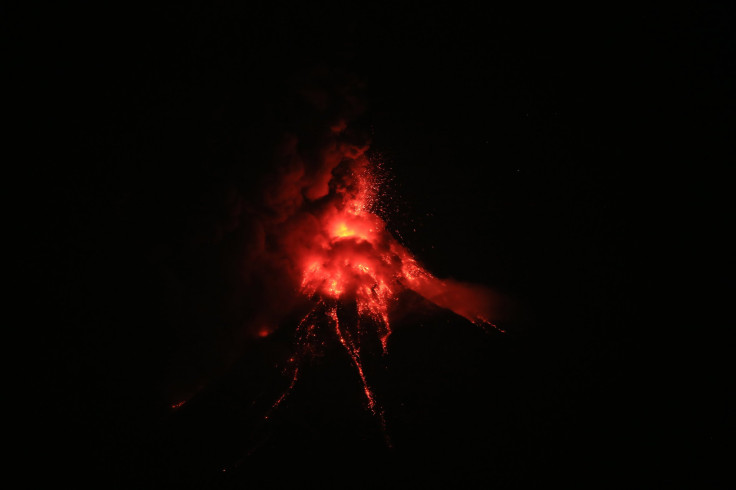Mayon Volcano’s ‘Crater Glow’ Could Be Sign Of Rising Magma, Experts Warn

KEY POINTS
- A crater glow was detected in Mayon Volcano
- Magma might be rising inside the volcano
- The volcano is still at Alert Level 2
The Mayon Volcano in the province of Albay in the Philippines showed increased activity in the last couple of days in the form of an orange glow from its main crater. According to experts, the latest volcanic activity could indicate that magma is moving within the volcano.
Like the Taal Volcano in the Batangas province, local agencies in the Philippines are also monitoring Mayon due to the threat of an eruption. It is considered as the most active volcano in the country with almost 50 eruptions in the last five centuries.
In the last couple of days, Mayon Volcano showed signs of increased activity. The most prominent one is an eerie glow from its crater. According to the Philippines Institute of Volcanology and Seismology (PHIVOLCS), the strange glow may have been caused by the volcano’s magmatic activity.
As explained by the agency, it is possible that the remaining magma within the volcano is moving upwards toward its shallower levels. The presence of magma may have heated the volcano’s overlaying atmosphere, which then resulted in an orange-colored glow emanating from its crater.
“That is likely caused by hot magmatic gases heating the overlying atmosphere,” the agency said in an advisory shared via ABS CBN News. “This suggests the possibility that remnant magma may be quietly rising to the shallow levels of the edifice.”
#MayonVolcano crater glow observed at the summit. Photos taken on 4 Feb 2020, 7:00 PM at the Mayon Volcano Observatory, Ligñon Hill, Legazpi City.
— PHIVOLCS-DOST (@phivolcs_dost) February 5, 2020
DOST-PHIVOLCS reiterates that Alert Level 2 currently prevails over #MayonVolcano because it is still at a moderate level of unrest. pic.twitter.com/iOcUmIbPmt
Despite the volcano’s increased activity, PHIVOLCS noted in its latest bulletin that it had not detected volcanic earthquakes within the last couple of hours. However, the agency reported that the volcano’s sulfur dioxide emission still averages 115 tons a day.
Due to the volcano’s current status, PHIVOLCS advised residents near Mayon to avoid entering the permanent 6-kilometer radius danger zone around it. The agency also reported that the volcano is still at Alert Level 2, a status which it has maintained since December 2018. This was downgraded from Alert Level 4 after the volcano’s phreatic eruption in January of the same year.
Despite its lower status, PHIVOLCS noted that the volcano is still in danger of causing explosions.
“Alert Level 2 currently prevails over Mayon Volcano. This means that Mayon is at a moderate level of unrest,” the agency stated. “DOST-PHIVOLCS reminds the public that sudden explosions, lava collapses, pyroclastic density currents or PDCs and ashfall can still occur and threaten areas in the upper to middle slopes of Mayon.”
© Copyright IBTimes 2025. All rights reserved.





















